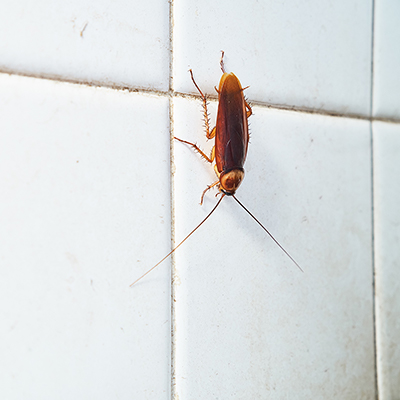How to Get Rid of Yellow Jackets

Last updated September 7, 2023
Yellow jackets encountered in the wild don’t pose much threat if you steer clear of their hive. However, when you encounter a yellow jacket nest or find that you have a full-on yellow jacket infestation at home, getting away from these problematic insects can be a challenge.
You can get a yellow jacket problem under control without calling in the pros. Use this guide to learn how to get rid of yellow jackets and keep them from building a new yellow jacket colony in the future.
Difficulty:
Beginner
Duration:
2-4 hours
Table of Contents
What Are Yellow Jackets?
Why Are Yellow Jackets A Problem?
Select a Treatment
Locate the Nest
Apply Spray Treatment
Hang Traps or Bait Stations
What Are Yellow Jackets?
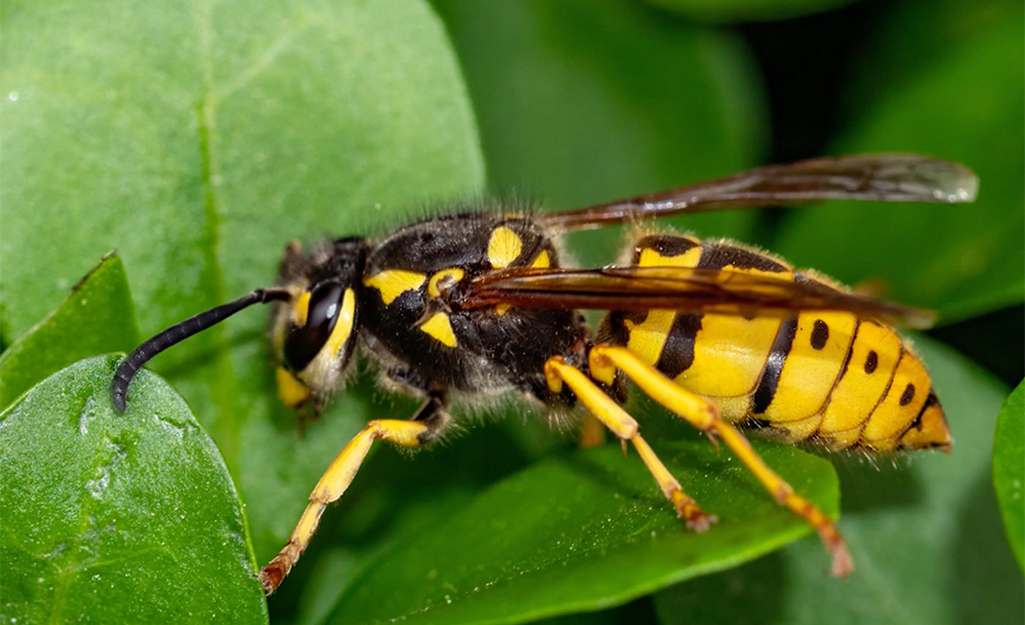
Yellow jackets are a type of wasp that typically make their home in an underground nest. However, there are a few varieties that will also build an aerial nest in eaves, crevices and other tight spaces around your home.
Yellow jackets are extremely aggressive insects that are drawn mainly to sugary liquids and meat. However, you may find them around other types of food or near plants around your house.
Why Are Yellow Jackets A Problem?
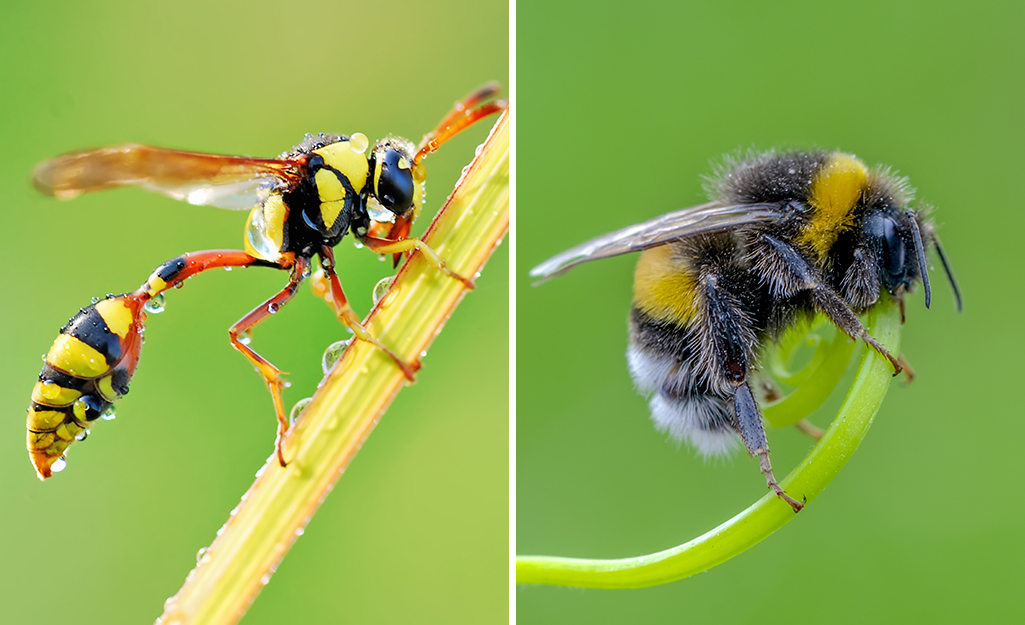
When you’re dealing with yellow jackets, it’s important to understand that each insect stings multiple times and injects venom into its victim each time. That’s what makes them so much more problematic than the average bee or common wasp, which stings only once.
Bees and yellow jackets appear similar at first glance, but yellow jackets are smaller than bees and have narrow mid-sections. Honeybees and bumblebees are also excellent pollinators, while yellow jackets are typically much less efficient at this. That makes yellow jackets a much less beneficial insect for your garden and outdoor spaces.
Typically, bees are also much less aggressive than yellow jackets. That’s why bee stings are relatively rare in comparison.
Yellow jackets on the other hand are easily provoked and attacks are often triggered by sound or vibrations. They can attack in swarms and will give chase over long distances if they feel threatened. That’s why it’s particularly important to curb yellow jacket activity around your home as soon as you notice it.
Select a Treatment
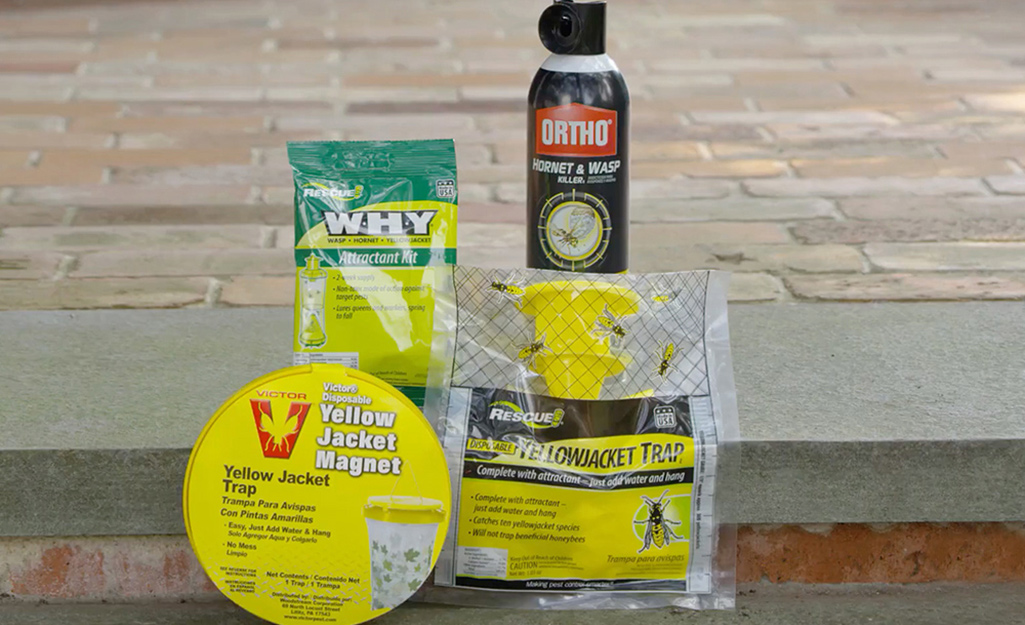
When you’ve found a yellow jacket nest around your home, you need to figure out the best yellow jacket removal solution quickly. There are a range of yellow jacket pest control options that you can use depending on what methods you are most comfortable with. Common options include traps, baits, sprays and foams.
In general, sprays and foams are best for spaces that are relatively easy to get in and out of. Working with sprays and foams in tight spaces, particularly with a large infestation, can be dangerous. Traps and baits are often a better solution when there are yellow jackets holed up in eaves or other tight spots around your home.
Not sure what type of yellow jacket control solution to use? A The Home Depot Store Associate can help you learn more about yellow jacket and wasp removal.
Locate the Nest
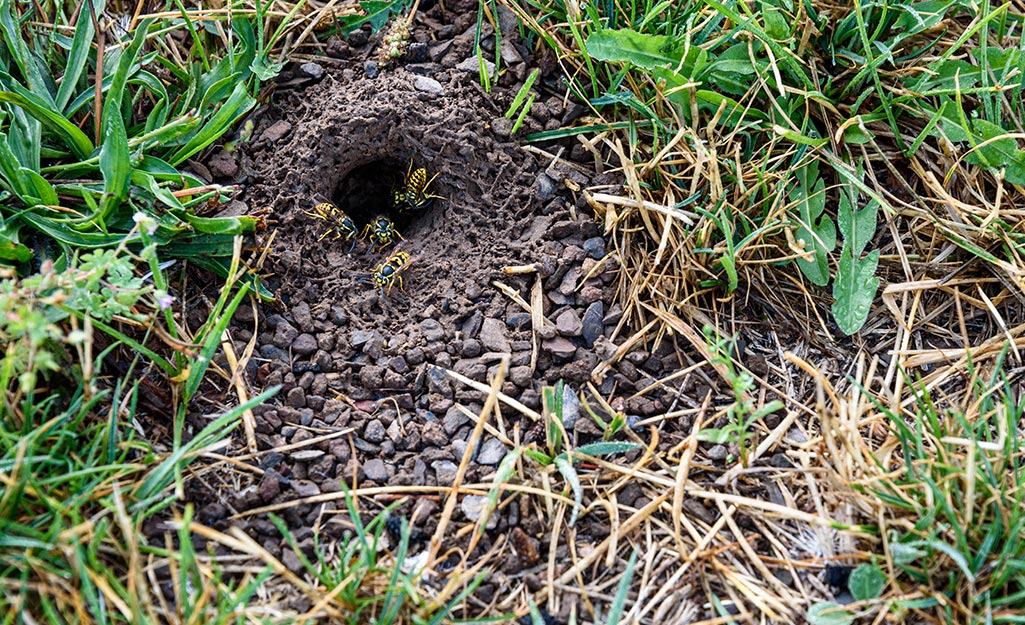
After deciding on a spray, foam trap or bait station to help you deal with your yellow jacket problem, try to find out where yellow jackets are nesting. The location of their home base makes a difference in which kind of treatment is more effective.
Here are a few tips to help you find a nest:
- Wear protective clothing. Put on long sleeves, pants, face protection and eye protection. Avoid exposing skin entirely to reduce the risk of a yellow jacket sting.
- Listen for buzzing sounds as an active yellow jacket colony can contain hundreds of insects and the noise this makes will be distinct.
- If you see a lone yellow jacket, try to follow at a discrete distance and see where it goes. Yellow jackets are not solitary; if you spot one, an entire colony won't be far away. Yellow jackets are a social wasp variety.
- Determine how large the nest is and where the entry and exit points are. There will likely be a few sentry yellow jackets, often referred to as worker wasps, flying around the nest opening.
- Treat yellow jacket nests just after dusk or just before sunrise. The low visibility will make it harder for the pest insects to locate you to sting. Yellow jackets tend to be less active during these hours as well.
Tip: Always ensure you’ve got a clear escape when setting a yellow jacket trap or working with spray treatments*.*
Apply Spray Treatment
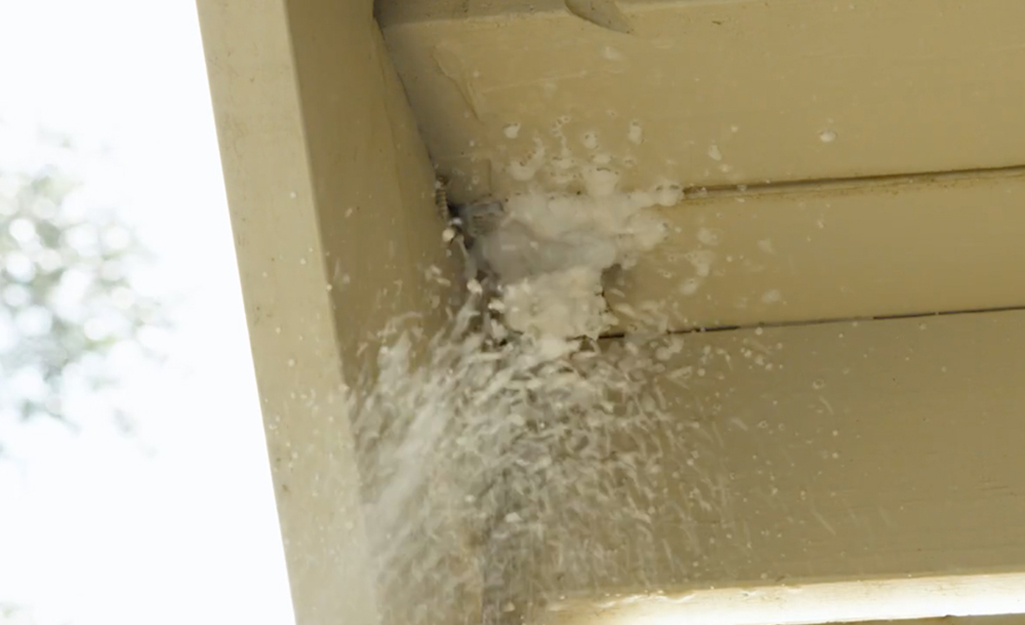
Spray treatments can be effective for killing individual yellow jackets you spot around your home. They can also help destroy small to medium-sized colonies.
Sprays are especially convenient when dealing with nests that have been built on structures around your home instead of in hidden areas. When the nest is easily visible, a foaming aerosol will both cover the openings and expand into the nest to trap and kill the yellow jackets.
Here are a few tips to help you choose the right spray treatment:
- Choose an aerosol with a long-range jet spray. This will allow you to stand back from the nest and still achieve effective coverage. You may need more than one spray bottle of your chosen insecticide to completely saturate the area.
- Spray the exit and entrance openings of the nest for one minute until the areas are thoroughly soaked.
- Move the spray in widening circles around the nest walls for even coverage.
- Directly spray any escaping insects before they can take flight.
- Wait a day and check the nest for activity again. Repeat treatment as needed.
Safety Tip: Follow all manufacturer's instructions and do not spray near water sources, wells or any areas where food will be stored or consumed.
Hang Traps or Bait Stations
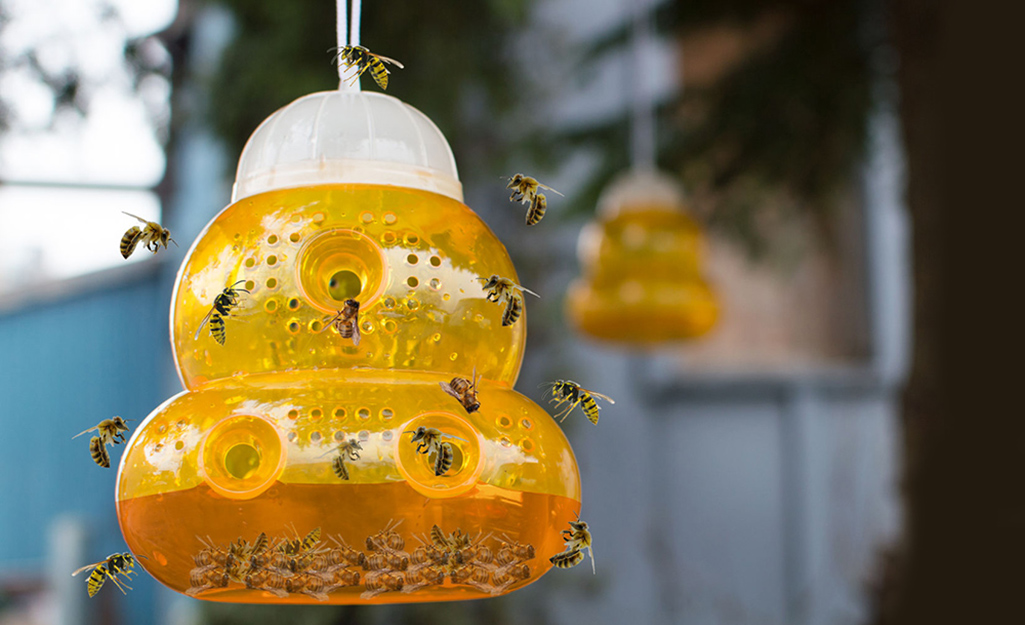
From cookouts to playdates, any summer outdoor activity that might feature food or drink is at risk for insect invasions. Placing traps can help keep yellow jackets from crashing your party.
Here are a few things to know about trap and bait stations:
- Most traps come with chemical lures. If bait is needed, a small amount of meat will best draw yellow jackets during late spring and early summer. Sweet foods and liquids like fruit juice will work best in late summer and fall.
- Hang up bait stations or traps in areas near the colony, but well away from areas where people or pets will be.
- Check traps and refresh baits every few days.
Install an Electric Zapper
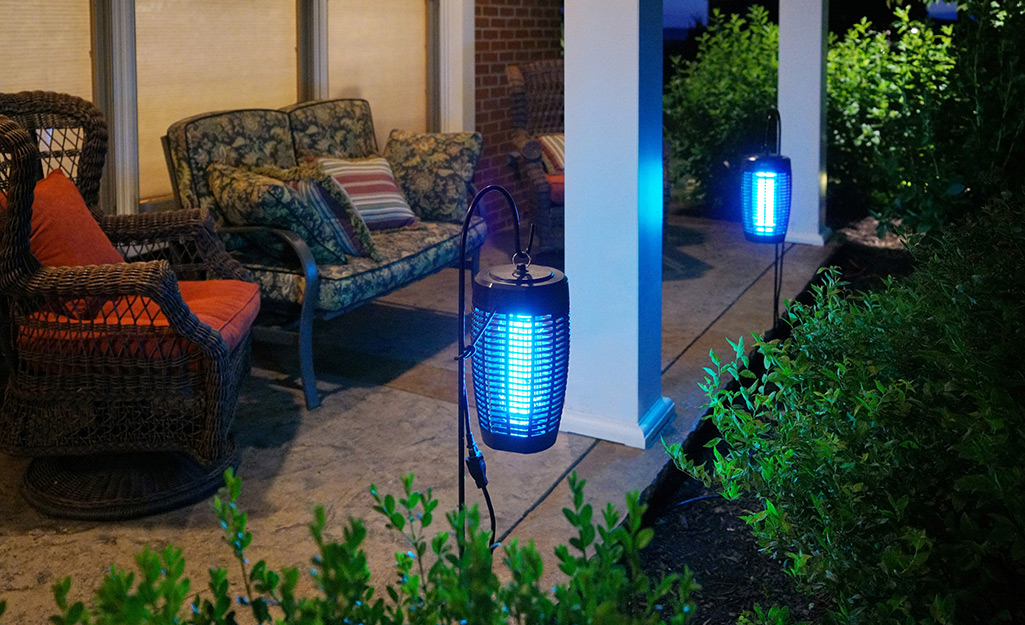
The aggressive nature of the yellow jacket can be used against the insect in your quest for a safe outdoor space. That’s where insect zappers can come in handy.
To use these, you’ll want to hang an electric bug zapper near the yellow jacket colony. If you can do so safely, you can also place one near the entrance of a ground colony.
The hum emitted by the device will cause sound and vibration that the insects will interpret as an intrusion. When they come to attack the device, many will be killed by the electric shock. While this method will not kill the entire colony on its own, it can be used in conjunction with other methods to great effect.
Use Proper Prevention Methods
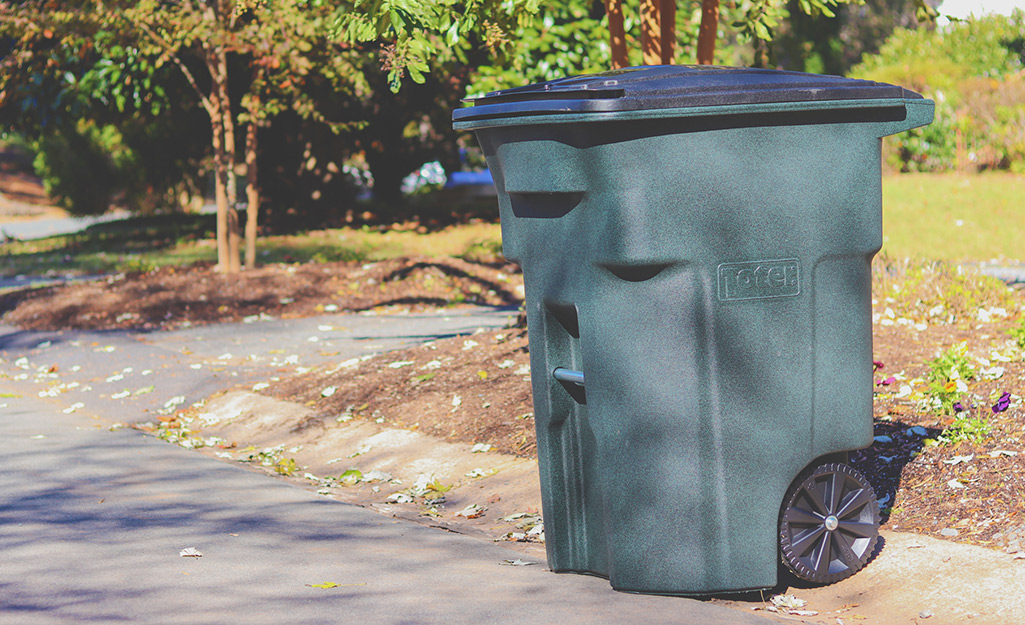
Getting rid of yellow jackets can be tricky, but once they’re gone, you need to keep them from coming back. Here are a few prevention methods you should know:
- Keep outdoor trash cans clean and sealed to limit yellow jacket foraging.
- Store pet food or animal feed in tightly closed containers. Ideally, these items should remain in your home, garage or in a tightly-sealed shed.
- Use a spray bottle with soapy water once in a while in spots where you’ve had to remove yellow jacket nests. Soapy water can keep nests from reforming. You can also use organic pest removal products as a deterrent.
- Carefully inspect your yard before beginning outdoor work to be sure there are no nests nearby.
- Avoid using overly floral body or hair products if you’re camping or spending a lot of time outdoors as the scent can be a yellow jacket attractant.
Yellow jackets can invade your outdoor spaces and make you feel unsafe in your own backyard. Sprays, foams, bait and traps can help rid your home of your stinging insect problem.
When dealing with yellow jackets, it’s important to always take proper safety precautions. Yellow jackets are much more aggressive and dangerous than other common pests like carpenter ants, termites or even regular honeybees.
Looking for the best products for getting rid of insects around your home? Shop online for the pest control you need. The Home Depot delivers online orders where and when you need them.


